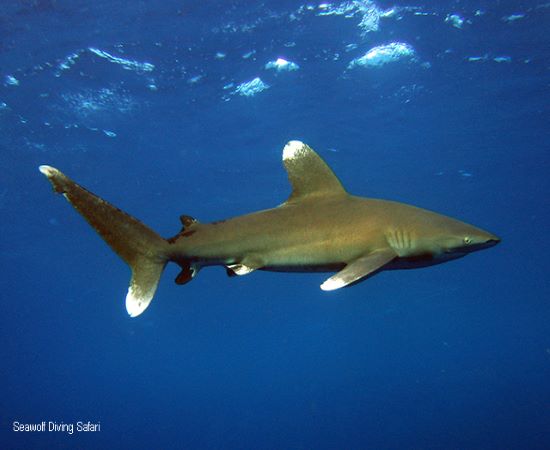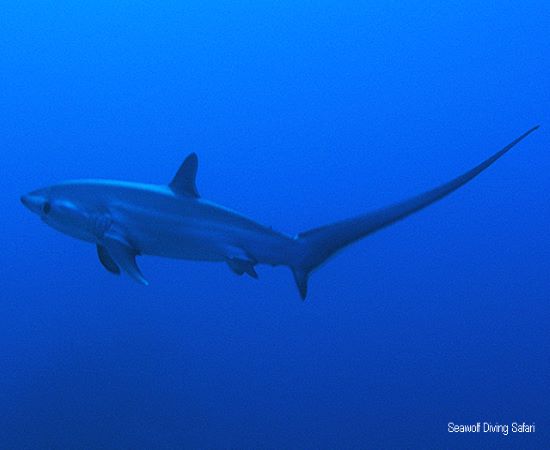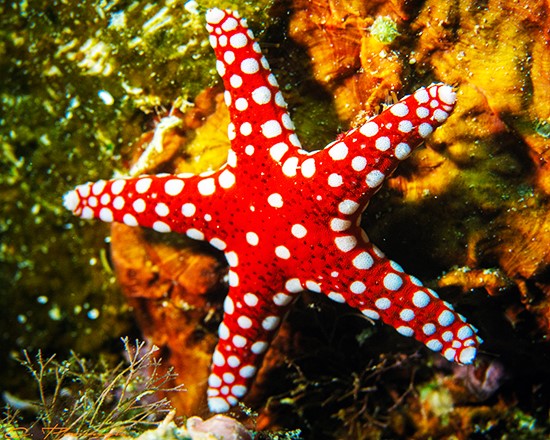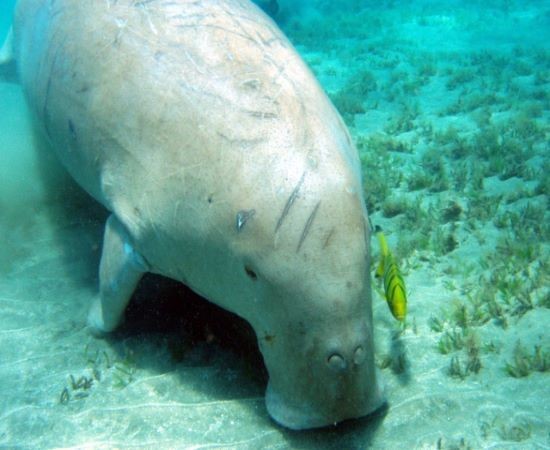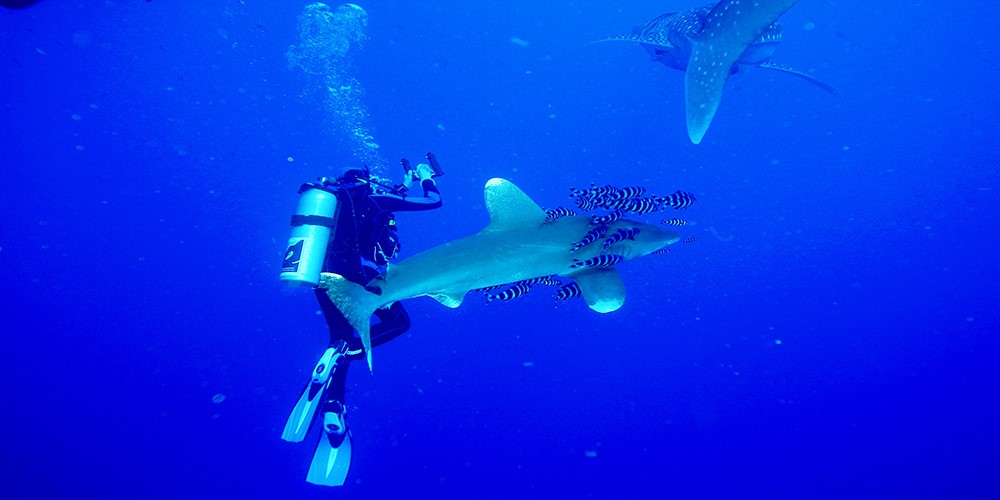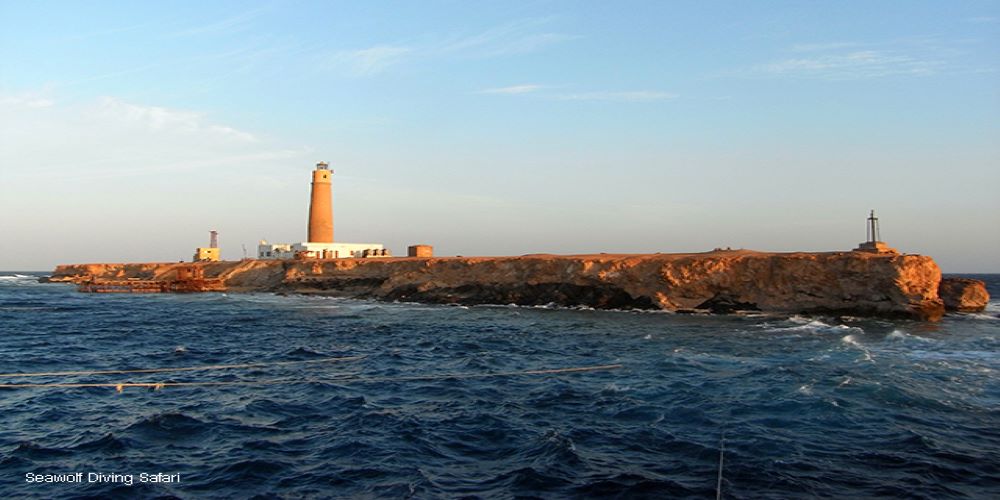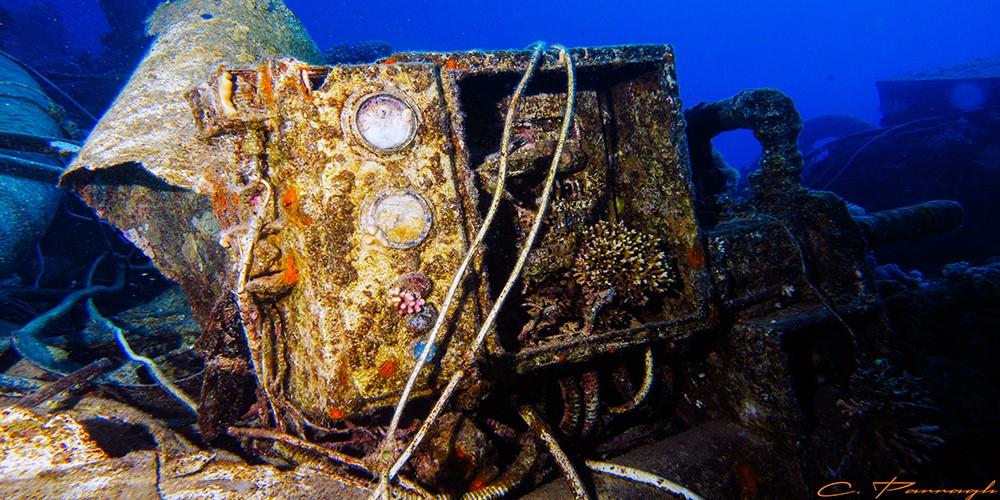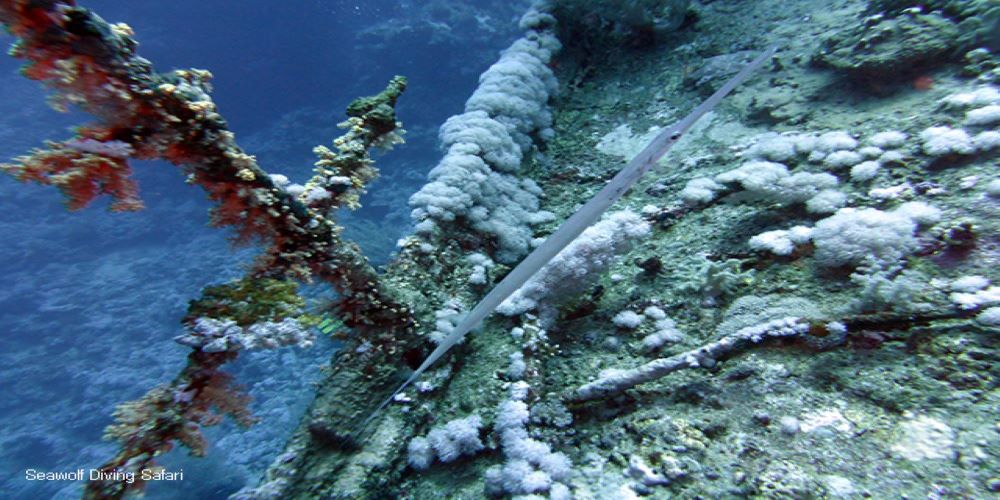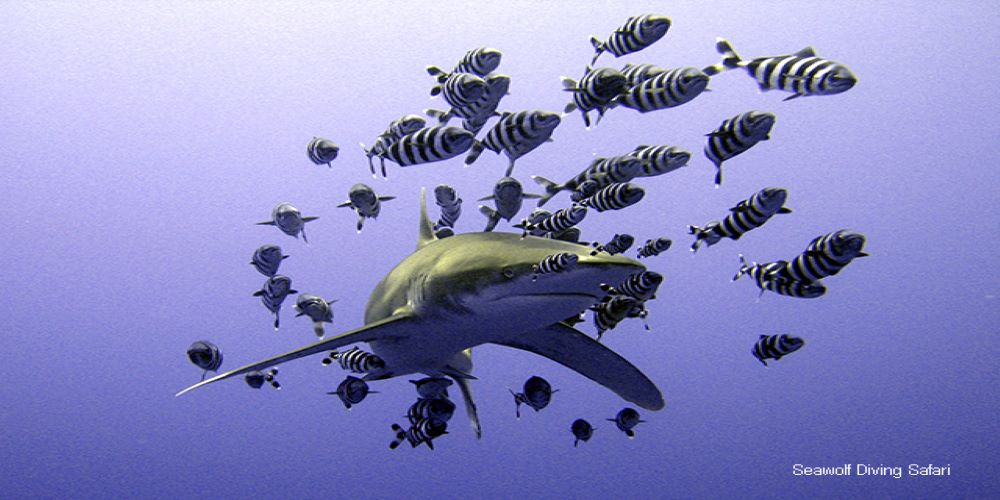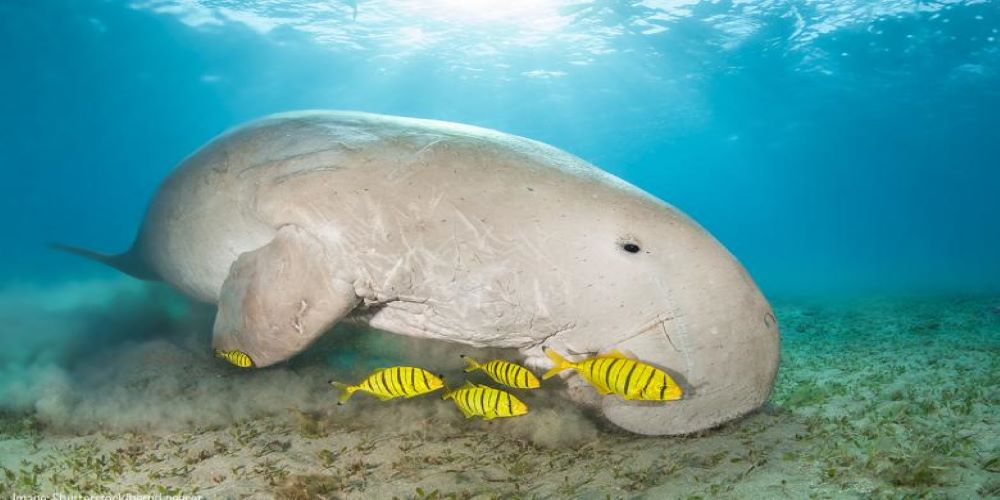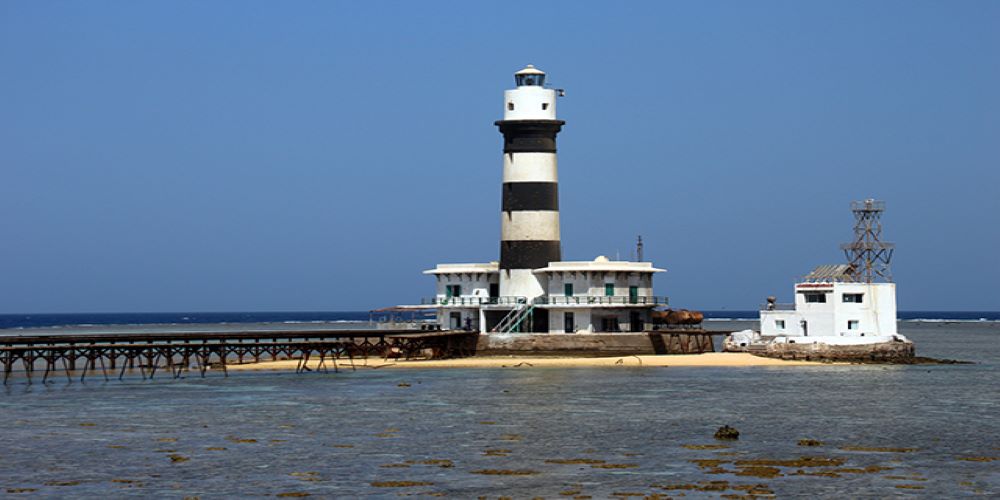MP North (Brothers/Daedalus/Elphinstone)
- Brothers, Daedalus, Elphinstone
- This challenging liveaboard takes you to the Brother Islands, Daedalus, Elphinstone Reef and, depending on the itinerary, to some offshore dive sites around Port Ghalib such as Shaab Abu Dabab.
- The "Brothers" are among the absolute top spots in the world! Big Brother thrills with spectacular drop-offs, huge gorgonian fans, soft corals and an indescribable abundance of fish.
- The "Aida" and "Numidia" offer unique diving experiences for wreck fans. For "experts", Little Brother is the even better place despite all the superlatives: immense overhangs, fields of soft and hard corals, turtles, tunas and schools of mackerel are part of everyday diving.
- Big fish like thresher sharks, hammerheads, capital "greys", whitetips and blacktips congregate here early in the morning and dusk with countless other species of deep-sea fish.
- The drop-offs down to 500 metres around Daedalus Island, offer great drift dives with the right current.
- Elphinstone Reef, which rises from the depths like a camel's hump, with its beautifully overgrown reef tops, drop-offs and resident sharks, is always great to dive.
- Depending on the itinerary, the interesting dive sites around Abu Dabab offer a neat conclusion to what is probably the best route in the Red Sea.
Expect to see
Elphinstone
From Marsa Alam the boat goes about one and a half hours north to Elphinstone Reef! The reef top of Elphinstone Reef lies at a depth of between one and three meters, depending on the water level. Strong surface currents and lots of boat traffic make snorkeling here impossible.
Divers, however, can dive right into a challenging treat! The reef is known for its exceptional biodiversity and, of course, sightings of large fish. In the north we dive on a sloping plateau from 18 to 40 meters and in the south on the underwater terraces. The west and east walls drop off steeply into the depths. The Elphinstone reef has a total length of about 600 meters and a width of 70 meters.
In large numbers we can see hard and soft corals in all colors. In addition, there are turtles, moray eels, loceanic white tip sharks, hammerhead sharks and pretty much everything that the Red Sea has to offer.
Big Brother Island
The Big Brother has a length of 200m and a width of 60m. It is almost perpendicular to the north-south direction and is a steep-walled reef except for the eastern plateau. On the island you usually have the opportunity to stretch your feet, smoke a shisha with the lighthouse keeper or buy small souvenirs and enjoy the view from the lighthouse. This can change depending on the mood of the military.
The wreck of the "Numidia" lies diagonally on the reef from 15m to 75m depth. The general cargo ship hit the west side in 1901 after a navigation error. Its cargo consisted of rails and railroad wheels. It is spread around the wreck. The overgrowth of the wreck stops almost abruptly at 40 meters.
The Numidia is one of the most beautifully overgrown wrecks in the world.
The "Aida", which nestles against the reef on the southern side at a depth of 30m to 65m, has been resting there since she ran aground on the fringing reef in rough seas in 1953. She was to bring personnel for the lighthouse and material for the island. Storms in early 2010 have left the wreck a bit battered.
Around the western end there is usually high wave and some current. If it is possible to dive there in the afternoon, you have the chance to see gray reef sharks and between the wrecks hammerhead sharks from time to time.
On the eastern plateau you can see thresher sharks, also gray reef sharks can be seen there very often. Further on the north side there are nice notches and the reef wall is beautifully covered with soft and hard corals. In addition there are all kinds of fish.
To the south is the jetty that supplies the lighthouse. On both sides you will find small notches in two to five meters depth with gigantic schools of fish, hunting cornetfish, juvenile napoleon wrasse. In the open water area, hunting mackerels, tunas and barracudas often pass by.
Numidia
The Red Sea has a width of 180 km at the Brothers, yet the crew managed to hit this small island - shortly after two o'clock in the morning, Captain Craig was rudely awakened by the violent impact of the ship on the reef at the northern end of the "Big Brother".
The "officer on watch", Merwood, had probably fallen asleep at the same time as his boss. The resulting course then led the ship in truly somnambulistic safety right into the middle of the reef.
The ship was thus stuck in and on the narrow fringing reef and all efforts to free itself failed.
In the following days, attempts were made to tow the Numidia free with the help of other ships, but this failed.
Captain Craig was left with the thankless task of remaining on the desolate island for several more weeks to supervise the salvage of the cargo.
Probably in the winter storms of 1901/02, the ship was then torn from the reef and it sank for good.
Aida
Originally intended for the Egyptian Port and Lighthouse Administration, she was later used for ferry and supply work in Egyptian ports.
The AIDA was to provide supplies for the Egyptian soldiers who were always stationed on the southeast coast of Big Brother Island on a bi-monthly basis. She carried fresh water, food and the next guard shift.
On September 15, 1957 in a heavy storm, the captain, ignoring several warnings, decided to go anyway and tried to moor at Big Brother. He struck the reef.
The AIDA began to sink rapidly and the captain had no choice but to abandon ship with his crew. A lifeboat was able to be lowered and all 77 sailors were still safely picked up and set down on Big Brother before the AIDA sank.
The dive on the AIDA is an extraordinary dive, no matter how much experience you have as a diver. It leaves you wondering how a ship can sink like that and stand on the sloping reef edge, as if parked. Since the ship no longer contains any cargo, one suspects that this has slipped through the wreck and now lies in deeper regions on the ground. Same as, the AIDA stands bolt upright on the sloping reef edge, the highest point at 25 m, the screw at 57 m. Apart from the collision with the reef, the ship is still completely intact.
It has been there for more than 40 years now and is becoming more and more part of the reef, overgrown with corals.
Small Brother Island
Little Brother runs from northwest to southeast at 100m long and 50m wide. To the north, Little Brother runs somewhat wedge-shaped. Its height is 11 to 12m and it is surrounded by a fringing reef that seems to literally guard it. On the southeast side, where the moorings are, the reef drops steeply down to 10m, where there is a small reef nose that turns into a slight slope. It ends with an overhang at 37m. After that, the wall drops further into the depths. There, a lagoon like wall runs from the north to the large gorgonian garden that extends from 18m to well over 40m in the east.
Shaab Shona
The lagoon is formed from a dried up river (wadi) and with a diameter of 150m between 5 and 45m deep. You can still see the wadi in the middle as a channel that rises to the north and south. In the north there is a plateau whose edges drop from 14 to over 40m.
The north side is characterized by boulders where you can find ghost pipefish, long-jawed makerels, glassfish and crocodile fish, but of course also as many different coral species. They reach from the reef edge partly down to 20m and are covered with life.
Daedalus
With a length of 600 to 750m and a width of 100m in the north and 300m in the south, Daedalus is a very large reef. In the south there is a lighthouse that guides the ships at night. Here you can shop, stretch your feet or climb the lighthouse. On the north side there is a steep wall, which towards the east on a depth between 18 and 40m changes into several lagoon like plateaus. There in the blue water you can find the hammerhead sharks. Usually, depending on the current, several groups of 12 to 25 animals each can be found.
Almost all boats anchored at Daedalus will send their Zodiacs north in the early morning hours. The best place to go in the water is at the northwest corner.
It is worth - always in sight of the reef - to dive a bit into the blue water and just wait at 20 or 25 meters depth. If there is nothing to be seen, dive calmly at the same depth in southeast direction around the reef top. On the east side there are two lagoons, near which the hammerhead sharks usually come out of the depth. At the first moment you will usually see only one animal. It will dive past you at some distance and lie down on its side to show its strength. Stay where you are. Do not go deeper or follow the shark - it will disappear into the depths. However, if you have waited patiently, the other animals in the group will come out of the depths and attempt to get close to you. If you get too close to them, they will dive away. But if you stay where you are, or even ascend a few meters - yes, yes, the NDL time - the animals will usually follow. Then you have the opportunity to enjoy this spectacle for up to 20 minutes.
Nearby is also the so called "Manta Point" with its colorful reef wall. The whole east side is a first class spot. You should always look below you into the depth or into the blue water - there will always be big hunters in sight.
The west side with its notches is home to one of the largest anemone colonies in the Red Sea. More than 200, with their red outer shell and delicate yellow to greenish coloring, have attached themselves to the reef on a width of just 10 meters in the narrowest of spaces. This colony reaches down to a depth of more than 50m. But further south it finally takes your breath away. There sits a gigantic hard coral, at whose sight one feels tiny: Like a waterfall it falls down from 4 to 19m. Unfortunately, the first damages are already visible.
In the south of Daedalus there is a plateau with big and small boulders - a good place for the thresher shark. Nearby is rubble and steel from the lighthouse. Moray eels and groupers slumber in it. You can also find turtles, gray reef sharks, hunting mackerel and tuna, and of course stonefish and snails.
At the southern drop-off edge of the plateau you can find a small colony of anemones. The special thing about it is the coexistence of different colored species in a small area. In the upper area one often encounters deep sea sharks, such as the Oceanic white tip shark and the silky shark.
Daedalus is also an outer reef and marine park. Apart from the general regulations, anyone going diving here should be able to cope with changing, sometimes strong currents, high waves and Zodiacs. In addition, a deep dive specialty is recommended.
Itinerary
ATTENTION: The tour description is only a suggestion. Which dive sites are dived on the tour depends on many factors, including wind and weather.
Arrival
After arrival in Hurghada or Marsa Alam transfer to the boat.
Check in, dinner and spending the first night onboard in the marina.
Departure
Departure in the morning.
Familiarization of the boat,
Diving, safety and equipment briefing.
Two dives at Small Giftun Island
Brother Islands
Two dives at Big Brother
One dive at Small Brother
Daedalus
Dives at
Daedalus north
Daedalus south
Daedalus west
Daedalus
Dives at
Daedalus north
Daedalus south-west
Daedalus south
Elphinstone reef
Dives at
Elphinstone north
Elphinstone south
Abu Dabab
Night dive at Abu Dabab
Return
Two dives at Marsa Shona
Return to the port.
For safety reasons you should not dive 24 hours before your flight home.
Check out
Breakfast and check out no later than 10 am.
Transfer to the airport or hotel.

 ENGLISH
ENGLISH
 РУССКИЙ
РУССКИЙ
 DEUTSCH
DEUTSCH
_lg.webP)
